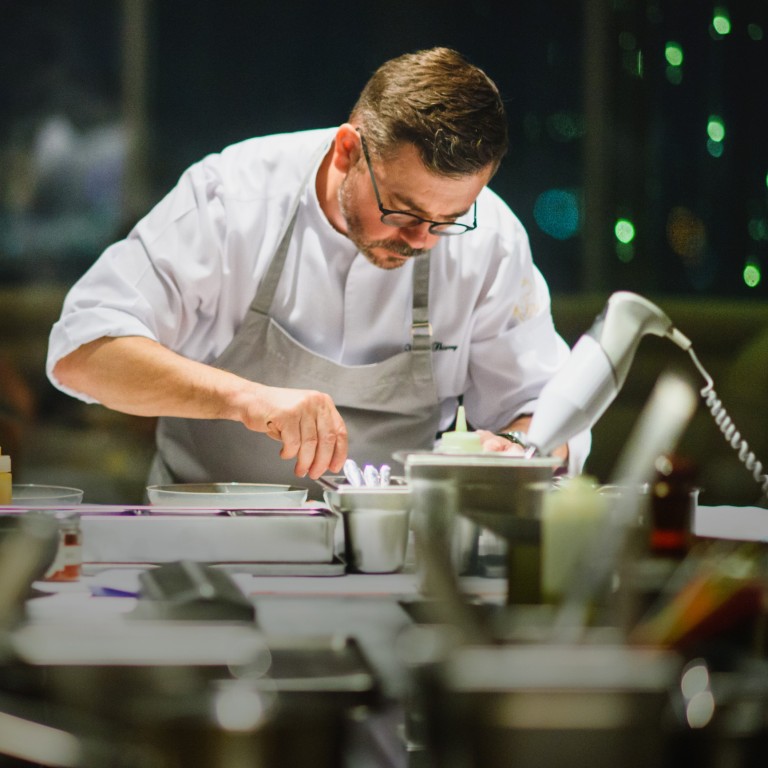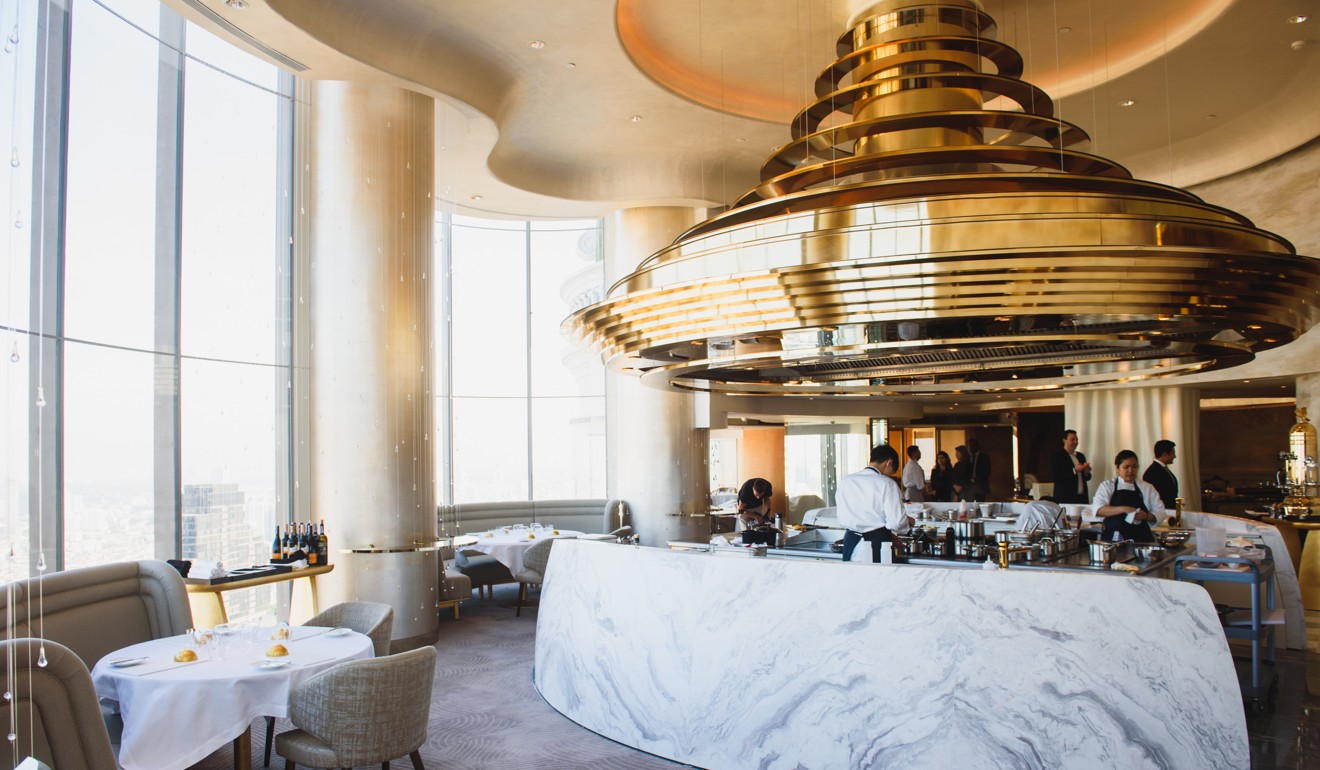
What made French chef Vincent Thierry leave Hong Kong for Bangkok
- ‘After three years of three Michelin stars at Caprice, I became bored doing the same thing’
- The Frenchman behind Chef’s Table at Lebua, in Bangkok, reveals the challenges of having a dining room in the middle of the kitchen
Tell us about your childhood, in France’s Loire Valley. “It was simple. I had a simple family, and I was taught to work hard and do things correctly or do it again. My dad was a repairman for Philips, fixing things like TVs and washing machines, and my mum was a kindergarten teaching assistant.”
How did you get interested in cooking? “My oldest brother is a chef, and [I’ve always appreciated] family cooking that is humble, nothing special, with everything cooked in a simple way. I was influenced by my mum and maternal grandmother, who was a farmer and cooked everything from the farm. Today, we talk about chefs with gardens because that’s trendy, but 40 years ago it was normal. My grandmother made rabbit, chicken, beef, pâté, blood sausage and ham. The best things are when you discover the real taste of food.”
When did you know you wanted to be a chef? “I was 14. I wanted to become an apprentice. I went to culinary school for two years in Montpellier, in the south of France. It was 800km from my hometown. I was 15 at the time. Of course, it’s a young age, but my brother did the same. You feel a bit more confident because someone did it before you. Afterwards, I went to Paris to find a job and my brother helped me to discover the Michelin Guide. There are many restaurants looking for chefs, but if I wanted a good place I needed to look in this book. I wrote letters by hand asking for a job at two- and three-Michelin-starred places, mostly in Paris because my brother was there.
“I worked for a few restaurants for six months and then I was contacted by Taillevent, in Paris, at the time a three-Michelin-starred restaurant. It was so scary when I went into the kitchen because I saw the traditional chefs with big hats and a big brigade. I was 18 then.”

How did you get to Hong Kong? “In 1999, I started working at Le Cinq, at the Four Seasons Hotel George V [in Paris], and was there for six years as sous chef. I expressed my wish to move on and the hotel general manager proposed I go to the Four Seasons Hong Kong.
“I had been to Singapore before, never Hong Kong or China. When I moved, in 2005, nobody knew the Michelin Guide would come to Hong Kong three years later. I was there to open a Mediterranean restaurant [called Caprice] in the Four Seasons. For me, it was an opportunity to learn English, and also educate my kids outside France to have an open mind and learn another culture.”

What did you think of your success at Caprice? “It got two stars in 2009, then a third star in 2010. It was unbelievable. You don’t imagine going from France to Hong Kong to get a Michelin star. It’s not logical.”
Michelin Guide Hong Kong and Macau 2019 elevates Caprice, Jade Dragon
What happened to the new restaurant? “It was never built, for financial reasons. Six years ago, the plan was to open a bistro in Bangkok, which was appropriate at the time. It was disappointing, but you need to move on.”
How did Chef’s Table come about? “In 2018, Deepak Ohri, the chief executive of Lebua [a Bangkok-based luxury hotel and restaurant company], contacted me. We talked about building a French fine-dining restaurant on the 61st floor of the State Tower. I never imagined going back to fine dining. I didn’t move to Bangkok to do the same thing. I’m not pretentious in thinking that I did it once, I can do it again. But I was comfortable going back. We opened in March.”

How did you come up with the concept of a dining room inside the kitchen? “We were talking about what Chef’s Table is and suddenly we arrived at the idea of a kitchen in the middle of the restaurant with a proper fine-dining set-up, complete with tablecloths. There are a lot of technical challenges – the most important is the exhaust system. You can’t have guests smelling like steak after two or three hours in the restaurant. And the building is nearly 15 years old. The lift was not large enough so the stove had to be cut into four pieces and put back together.”
Do you use local ingredients? “We use local vegetables, dairy, fruits, chocolate and tea. I make my own butter using local cow’s milk. Thailand has some good farmers, but we need to find them. The good ones have a small production and don’t come often to the city. Sometimes you have to educate them. They know how to grow carrots, but if you want baby carrots, you have to tell them to harvest the carrots earlier. The quality of the chicken and duck is getting better. Thailand’s food scene is booming .”
Vincent Thierry was in Hong Kong recently for a four-hands event at Écriture, Central.

